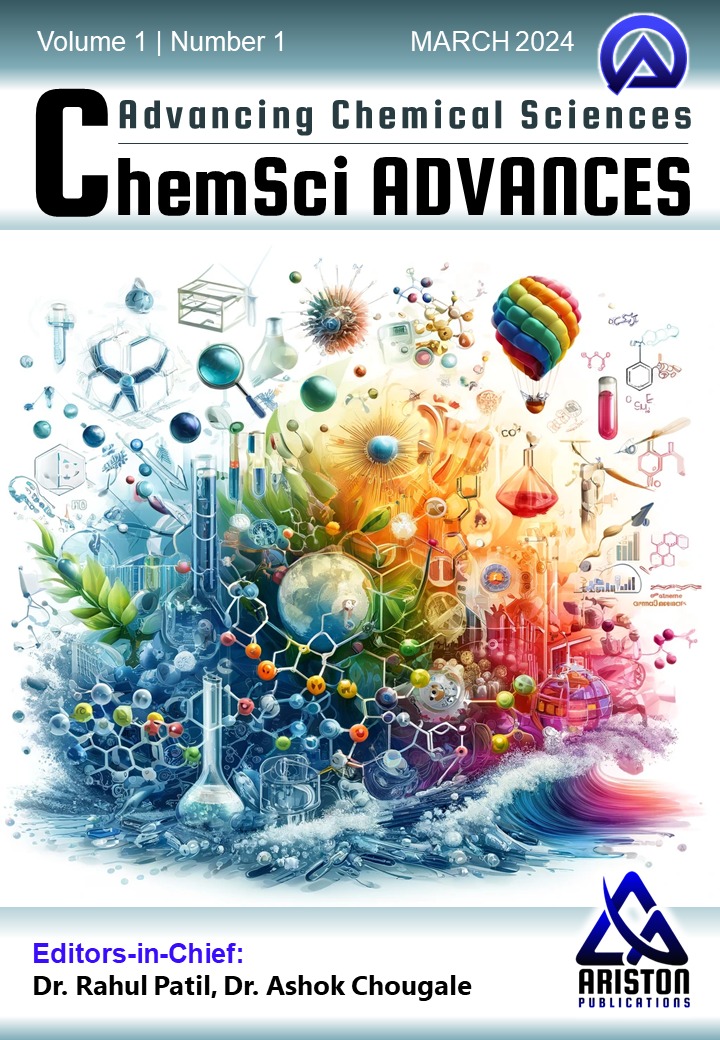Mileend Manohar Sangare, Sagar Tanaji Sankpal, Rishikesh Rajaram Surve
1Department of Chemistry, A.C.S. College, Lanja 416701, Ratnagiri, Maharashtra, India
2Department of Chemistry, A.S.P. College, Devrukh 415804, Ratnagiri, Maharashtra, India
*Author to whom correspondence should be addressed:
mileendsangare@gmail.com (M. Manohar Sangare)
surverishikesh1@gmail.com (R. Rajaram Surve)
ABSTRACT
Schiff bases, distinguished by their imine (-C=N-) functional group, have gained substantial interest due to their diverse applications in medicinal chemistry, catalysis, and materials science. These compounds are commonly synthesized through the condensation of primary amines with aldehydes or ketones and play a crucial role as ligands in forming metal complexes with enhanced biological and catalytic properties. However, conventional synthesis methods often involve extended reaction times, harsh conditions, and excessive solvent use, necessitating the adoption of more sustainable alternatives. Microwave-assisted synthesis (MAS) has emerged as an effective strategy in green chemistry, offering notable advantages such as accelerated reaction rates, improved yields, and energy efficiency. By employing microwave irradiation, this technique enhances reaction kinetics through uniform heating, reducing unwanted side reactions and minimizing solvent consumption. Recent research has shown that MAS enables the environmentally friendly and efficient synthesis of Schiff bases and their metal complexes, ensuring better product purity and crystallinity. An in-depth analysis of recent studies underscores the efficiency of MAS in Schiff base synthesis, emphasizing its contribution to green and sustainable chemistry. In comparison to conventional techniques, MAS significantly shortens reaction durations while maintaining high selectivity and product yields. Additionally, its potential for solvent-free synthesis aligns with eco-friendly practices. This review explores the latest advancements in microwave-assisted synthesis of Schiff bases and their metal complexes, focusing on structural characterization, practical applications, and emerging research directions. The integration of MAS with other green chemistry methodologies is expected to further enhance the sustainability and effectiveness of Schiff base chemistry, making it a promising area for future exploration.

Significance of the Study:
This study highlights microwave-assisted synthesis (MAS) as a green, efficient approach for preparing Schiff bases and their metal complexes, overcoming limitations of conventional methods. MAS enhances reaction rates, reduces energy consumption, and minimizes solvent use, aligning with sustainable chemistry principles. The review underscores MAS’s role in improving product purity, crystallinity, and yield while exploring its integration with other eco-friendly techniques. These advancements are crucial for expanding applications in medicinal chemistry, catalysis, and materials science, offering a sustainable pathway for future research and industrial scalability.
Summary of the Study:
The review examines microwave-assisted synthesis (MAS) of Schiff bases and their metal complexes, emphasizing its advantages over traditional methods, including faster reactions, higher yields, and reduced environmental impact. It discusses structural characterization, applications, and challenges like scale-up limitations and solvent dependency. Future directions propose integrating MAS with ultrasound or mechanochemistry and leveraging computational tools for optimization. By addressing these challenges, MAS can advance green chemistry and expand the functional diversity of Schiff base complexes for biomedical and industrial applications.
